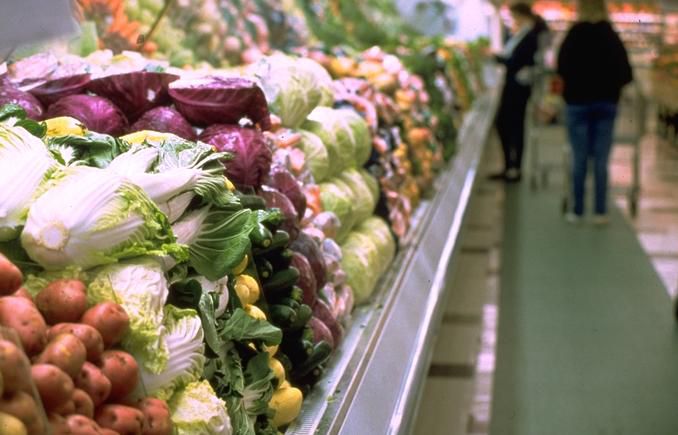The Mystery of the One Percent
Published
4/20/2017
By Julie Murphree, Arizona Farm Bureau Communication and Organization Director: Recently, a random statistic was thrown out that claimed Arizona imports 99% of the food that goes to our neighborhood groceries, restaurants and homes. The 1 percent claim of what’s home-grown then served and sold in the state is a powerful statistic to use against our current Arizona food system, if it were true.
With a quick query to our cadre of researchers and scientists at the University of Arizona, our land-grant university, the mystery of the 1% was debunked in a matter of days.
According to Ashley Kerna, an Economic Impact Analyst at the University of Arizona's Cooperative Extension and Department of Agricultural and Resource Economics, approximately 30% of Arizona household spending on raw agricultural food products comes from Arizona farm and ranches.

Approximately 30% of Arizona household spending on raw agricultural food products comes from Arizona farm and ranches; an estimated 18% of Arizona household spending on processed food products comes from Arizona processing facilities.
“Obviously,
Even for processed foods, an estimated 18% of Arizona household spending on processed food products comes from Arizona processing facilities. While these processing facilities may not necessarily be using Arizona ingredients, there are
These figures are a far cry from the 1% claimed by some random statistic.
So, how did the U of A team get to this? The Input-Output model Kerna and Frisvold use, IMPLAN, has data on trade flows between more than 5,400 industries and to households of different income categories. Trade flows describe the movement of goods and services between Arizona and the outside world, generating what is known as Regional Purchase Coefficients (RPCs) for all commodities. An RPC is the proportion of local demand that is supplied by local producers. The IMPLAN trade flow data is based on national statistics from the Department of Commerce (Bureau of Economic Analysis) and Census Bureau. The U of A team used the IMPLAN trade flow data to calculate RPCs for both on-farm products and for processed foods.
These RPCs are estimated based on household demands, not industry demands. So the RPCs presented here are estimates of the proportion of local household demand for agricultural commodities and processed food products that are supplied locally (i.e., by the region to itself). In this case "locally" means within Arizona.
RPCs are higher for individual items that Arizona specializes in such as vegetables and melons, beef, fluid
Added
It seems to me we’ve lost a sense of maximizing
Do we really want other states saying, “Why are we buying all this lettuce from Arizona, that’s a bad thing?” If you go to a Phoenix grocery store, the lettuce, and leafy greens in the winter are going to come from Yuma; the eggs and milk, and much of the other dairy products will come from Arizona; tortillas too.
The chicken, pork, and fish will come from out of state, as will coffee, apples, bananas,
As our U of A team correctly points out, many items coming from outside the state are processed foods. Arizona’s food manufacturing industries are not as large as other states that specialize in corn and wheat. The food processing sector has been growing though. Milk and dairy product
And back to Arizona cotton: virtually all our cotton is exported, but much of it returns to the United States as clothing and household goods. Edible commodities are marketed in
And the origins of the one percent? It’s a mystery.
Editor’s Note: The Economic Impact Analyst (EIA) team formed over four years ago within the Cooperative Extension System (CES) in an effort to address the many issues and needs the agriculture industry has to quantitatively document the impacts of agriculture in Arizona and our CES programs. Collectively, the EIA group is providing to the CES the capacity to address questions and issues just like what we queried them about regarding the percentage of Arizona agriculture going to Arizona families. The EIA team does so in a technically correct manner, based on appropriate economic methods, providing valuable and accurate information in a timely manner.